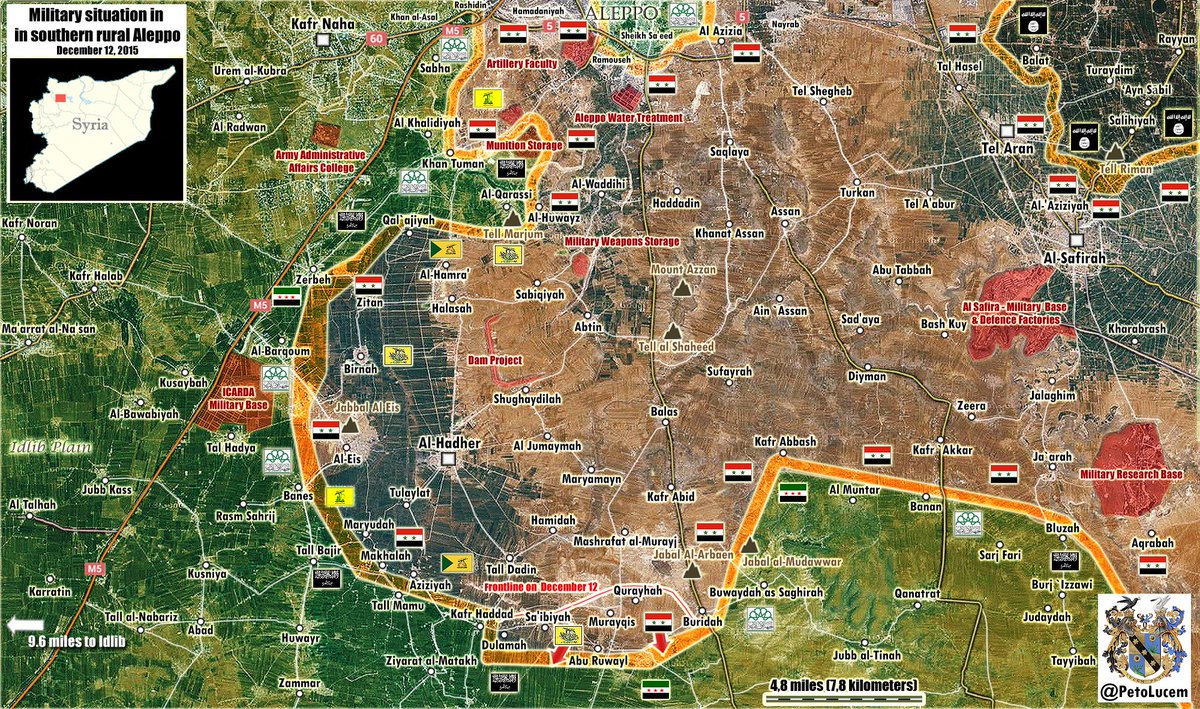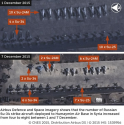SouthernSky
Junior Member
does it sound as I'm fed up?)
You sound a little needy. Perhaps a bit of pub time is in order.
does it sound as I'm fed up?)
I would suggest Master Jura that we examine the immediate past for clues to the future??? It seems that many here under-estimate or attempt to undermine Mr. Putin's very ambitious agenda. If we look at former Soviet Republic's Georgia, and the Ukraine, forces aligned with Mr. Putin now control the Crimea as an example, and many other "prime territories" in both of those countries??
Our own BHO is quite an encouragement for Mr. Putin to "step up", and defeating ISIL will be a badge of Honor, this in a battle that BHO simply can't force himself to engage in fully?
It saddens me to reflect upon this sad truth? but unless we elect someone willing to engage on these very important battle-fronts, the power vacuum will continue to grow?
... but now I've read there had been counter-strike(s) by Rebels in the direction of Zerbeh and Al-Barqum (the next village to the south-west, doesn't show on the map above); the most recent map I was able to find indeed puts Rebels into these two places:...
- Az Zerbah ("Zerbeh" on "edmaps") which was recently taken by the Government Forces according to several sources
...

so now I tried to "align" that info; I know the red line I've drawn doesn't make much sense, I'm not a fortune teller...
also interesting is the push by Government Forces right south

Russia has further bolstered its strike capability in Syria by deploying another four Su-34 aircraft to the Humaymim Air Base in Latakia province, Airbus Defence and Space imagery captured on 7 December shows.
Airbus Defence and Space imagery shows that the number of Russian Su-34 strike aircraft deployed to Humaymim Air Base in Syria increased from four to eight between 1 and 7 December. (CNES 2015, Distribution Airbus DS / 2015 IHS)
The deployment, which happened sometime after 1 December, brings the number of Su-34s in Syria up to eight. Russia also has 11 Su-24M tactical bombers, 12 Su-25 attack aircraft, four Su-30SM multirole fighters, and an Il-20M electronic intelligence (ELINT) platform at the base. A 12th Su-24M was shot down by a Turkish F-16 on 24 November.
Russian responded to that incident by deploying an S-400 strategic surface-to-air missile (SAM) battery.
With also 12 Mi-24 and 4 Mi-8.

only inobvious to the narcissist!You sound a little needy. Perhaps a bit of pub time is in order.
U.S.-led air raids on Islamic State terrorists in Iraq and Syria have shifted from buildings and fixed sites to fleeting targets in recent months, reflecting advances by allied ground forces and an effort to disrupt its illicit trade in oil.
Attacks on what the military refers to as "dynamic targets" have increased since early fall, according to data obtained by USA Today. These targets are often groups of fighters from the Islamic State, also known as ISIL, who have been forced into the open desert by allied ground forces. Also, in November pilots from the U.S.-led coalition launched a campaign to destroy tankers smuggling oil, a key revenue source for ISIL. Airstrikes have destroyed about 400 tankers.
Advances on the ground by U.S.-supported opposition fighters, known as Syrian Democratic Forces, in northern Syria have forced ISIL militants to move to confront the threat, said Nicholas Heras, an expert on Syria and ISIL at the Center for a New American Security. Previously, ISIL's elite foreign troops from other Arab countries and the Caucasus, had been hunkered down amid civilians in Syrian cities, essentially shielded from airstrikes because of the coalition's directive avoid civilian casualties.
"When they move now, the coalition has a better sense where they will be moving to and by what routes and stopping points along the way, and it makes eastern Syria a far more target-rich environment," Heras said.
The peak in attacking dynamic targets occurred from Nov. 10 to 23 when pilots hit 339 fleeting targets compared with 57 that had been planned before they launched their raids, the figures show. The mounting intensity of the fight comes as President Obama prepares to visit the Pentagon Monday with his national security team for an update on progress on ISIL.
Hitting moving targets comes with greater risk of civilian casualties, a key concern for the U.S.-led coalition whose commanders fear such losses will alienate local populations and prompt them to side with ISIL.
"ISIL has handed U.S. warfighters a horrible dilemma," said Loren Thompson a defense industry consultant and military analyst at the Lexington Institute. "They can't hit the terrorists without hitting civilians too. That's the way ISIL wants it, because hitting civilians could discredit U.S. actions."
Meanwhile, additional data show the U.S.-led coalition confronting Islamic State terrorists continues to be just that — U.S led and dominated.
Nearly 78 percent of the 8,783 attacks with bombs and missiles on targets in Iraq and Syria on the Islamic State have come from U.S. warplanes since the air war began in August 2014. In Syria, the heart of the Islamic State, 94 percent of the air raids have been made by American pilots, the figures show.
The White House and Pentagon regularly point to the 60-nation coalition fighting ISIL militants. The reality is that, apart from Kurdish peshmerga fighters in Iraq and Syria and halting efforts by Iraqi security forces on the ground, the war is largely an American air campaign.
"It makes a lot of sense that the U.S. would be carrying out such a disproportionate number of airstrikes compared to its coalition partners," Heras said. "The U.S., of all its coalition partners, has the largest and most well-developed forward-deployed force structure in the Middle East, which no other regional or global partner, or global rival such as Russia, can match."
From Oct. 15 to Nov. 15, the latest monthly figures available, American pilots conducted about three quarters of the 759 airstrikes, the second highest total for a month since the war began. French pilots, flying sorties from Jordan, attacked targets in Syria shortly after the ISIL attack on Paris Nov. 13 that killed 130 people. Since then, France has also deployed the aircraft carrier Charles de Gaulle to the eastern Mediterranean to launch more strikes.
Other allies, including the British and Italians, fly tankers to refuel warplanes and drones to spy on ISIL. But Arab countries in the U.S.-led coalition fly only occasional missions, said a senior Defense official who spoke on condition of anonymity to discuss operations. Saudi Arabia, which has been preoccupied bombing rebel forces in Yemen, flew missions in Syria last week after a considerable break.
"The challenge for the U.S. in regard to the coalition effort continues to be to get important Arab regional partners, particularly Saudi Arabia and the (United Arab Emirates), to pay greater attention to taking the fight to ISIS, both in the air and looking to the future, on the ground, inside of Syria," Heras said.
British Secretary of State of Defense Michael Fallon, visiting the Pentagon on Friday, told reporters that the United Kingdom has doubled the number of missions against ISIL. Hours after the Parliament voted Dec. 3 to allow air strikes in Syria, British warplanes began attacking oil infrastructure that ISIL relies on for revenue, Fallon said. He also noted that British spy planes provide 60 percent of the reconnaissance flights on ISIL targets.
suggest the Russian blogger does not know what a quagmire is.interestingly, a Red Russian blogger (where I found it)
pretty much concurs
Putin's Quagmire in Syria Proves Obama Prescient
...is turning out to be right with his prediction that Vladimir Putin’s own campaign in Syria will descend into a quagmire.
All of this is the Obama admin trying to make their two year campaign, where not much in terms of substance on the ground was accomplished...look better than it is.the NavyTimes story
Anti-ISIL strikes now aimed at moving targets
